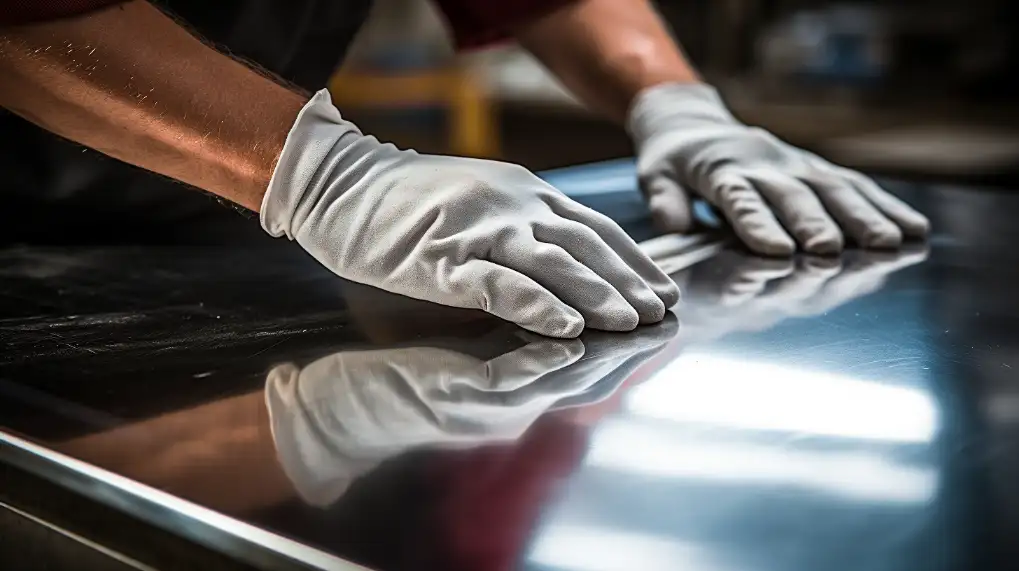Views: 0 Author: Rachel Wynn Publish Time: 2025-07-24 Origin: Site











Stainless steel is a durable and versatile material widely used in various industries, from kitchen appliances to automotive parts. Over time, however, it can lose its shiny appearance due to scratches, tarnishing, or oxidation. Fortunately, buffing stainless steel can help restore its smooth, reflective surface, giving it a brand-new look. In this guide, we'll walk you through the process of how to buff stainless steel effectively, ensuring a smooth and polished finish.
Buffing stainless steel is essential for maintaining its aesthetic appeal and functionality. Over time, the metal can accumulate grime, scratches, or even rust, affecting its appearance and performance. Buffing helps:
Restore Shine: Bring back the reflective finish that stainless steel is known for.
Remove Scratches: Buffing can reduce the appearance of minor scratches and surface imperfections.
Prevent Corrosion: A smooth, polished surface is less likely to harbor dirt and moisture, which can lead to rust.
Before you begin buffing, ensure you have the following tools and materials
Stainless Steel Polish or Buffing Compound: This helps in removing scratches and provides a smooth finish.
Buffing Wheel or Polishing Pad: For applying the polishing compound evenly.
Electric Drill or Buffing Machine: An electric drill can be used with a buffing wheel for faster results. Alternatively, a dedicated buffing machine is ideal for larger surfaces.
Microfiber Cloth or Cotton Rags: To clean the surface before and after buffing.
Protective Gear: Wear gloves and safety glasses to protect yourself from debris and polishing compounds.

Start by thoroughly cleaning the stainless steel surface to remove any dirt, grease, or grime. Use a mild soap solution or a specialized stainless steel cleaner and a microfiber cloth to wipe down the surface. If the surface has any rust or tough stains, use a non-abrasive cleaner or rust remover before proceeding.
Once the surface is clean, apply a small amount of stainless steel polish or buffing compound to the area you wish to buff. Be sure to use a product that is suitable for stainless steel to avoid damaging the surface. Spread the compound evenly across the surface with a soft cloth or directly onto the buffing wheel.
If you're using an electric drill or buffer, attach the buffing wheel and begin working on the surface. Start at a low speed to avoid any damage and gradually increase the speed as you go. Move the wheel in a circular motion, ensuring you cover the entire surface. Work in small sections to ensure that you don’t miss any spots. If you're buffing by hand, use the polishing pad to work the compound into the surface, applying consistent pressure.
After buffing the entire surface, inspect it for any remaining scratches, dull spots, or imperfections. If necessary, apply more buffing compound and repeat the process until you achieve the desired shine. Always make sure the surface remains smooth and free of uneven patches.
After buffing, use a microfiber cloth to wipe off any remaining compound residue. This will leave the surface looking shiny and polished. If you used a machine, give the surface a final inspection and ensure it is free from streaks or marks.
Always Buff in the Same Direction: When using a buffing machine or hand buffer, it’s important to maintain a consistent motion. Buffing in circles or following the grain direction of the stainless steel will yield the best results.
Test on a Small Area First: Before buffing the entire surface, test the process on a small, inconspicuous area to ensure it doesn’t damage the material.
Use a High-Quality Buffing Compound: The quality of your buffing compound will significantly affect the results. Opt for a product that is specifically designed for stainless steel.
Keep the Surface Cool: Buffing generates heat. Take breaks if necessary to prevent the surface from becoming too hot, as heat can warp or damage stainless steel.

Yes, you can buff stainless steel by hand using a soft cloth or a polishing pad. While using an electric buffer speeds up the process, hand buffing can still yield excellent results, especially for smaller or delicate surfaces.
Yes, buffing stainless steel is safe as long as you take the necessary precautions, such as wearing safety glasses, gloves, and using the appropriate buffing compound and equipment. Always work in a well-ventilated area.
The frequency of buffing depends on how often your stainless steel items are exposed to dirt, scratches, or other environmental factors. Regular cleaning and maintenance can reduce the need for frequent buffing. In most cases, buffing once every few months is sufficient to maintain the shine.
Buffing can help minimize the appearance of light scratches, but deep scratches or gouges may require additional repairs, such as sanding or grinding, before buffing.
Buffing is a mechanical process that smooths the surface and restores shine, while polishing usually involves finer abrasives to give the surface a mirror-like finish. Buffing is a more aggressive technique, while polishing is typically done as a final step to enhance the shine.
Buffing stainless steel is a straightforward process that can help restore the shine and smoothness of your metal surfaces. Whether you're working on kitchen appliances, automotive parts, or other stainless steel products, following the right steps will ensure excellent results. Regular cleaning and buffing will keep your stainless steel looking brand new and maintain its durability against corrosion and wear.






